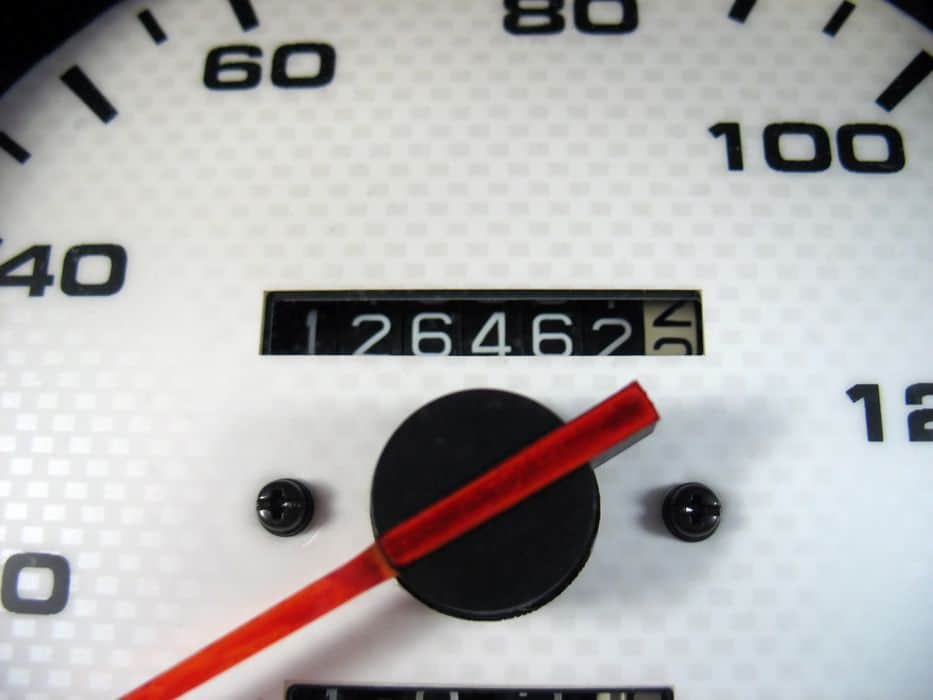4 February 2020 Concept Car
The MOT is a double edged sword. If it concerns the car we’re currently driving, we tend to see it as a nuisance. Once a year, we need to take our vehicle to the garage to have it inspected. And if there are any defects or discrepancies, we need to have them fixed – costing us valuable time and money.
When we’re buying a car, meanwhile, an MOT can be a godsend. By checking the MOT status, you can gather valuable information on its current condition. This can be a great tool for haggling or, even more importantly, sifting out bad deals. And best, of all, an online MOT check is entirely free and won’t cost you a penny.
In this feature, you’ll find everything you need to know about your MOT: How to check it, how to interpret the data and what to do with it. Don’t feel bad about not knowing about this earlier – almost 50% of UK drivers are unsure about how to collect their MOT status, too.
In fact, the MOT check is one of the UK government’s most popular services of all time. In their blog, they note this with palpable pride. 4,5 million requests are lodged every month and, according to inside information, 18,000 people even visited the site on Christmas eve. Clearly, those in the know are fully convinced about the benefits of a free online MOT check. h
And yet, the official MOT website is still a fairly young project. As recent as 2015, the process of obtaining any information on a vehicle’s MOT status was inconvenient and time-consuming. According to the government blog:
“To use the old service, the user needed the vehicle’s number plate and either the latest MOT certificate number, or the vehicle’s log book (V5C) number.”
Little wonder that drivers were dissatisfied. Using their feedback, those responsible rebuilt the process from the ground up. The result was one of the most useful services ever for UK car owners.
Once you have entered the registration plate number and confirmed the resulting match, you gain instant access to a wealth of information on the vehicle in question. This official MOT history includes the following:
The mechanic will also make a note of smaller defects, although not requiring a repair.
That’s a lot of useful data. If you’ve never logged onto the site before, the sheer wealth of information will astound you.

One of the greatest benefits of the MOT history check is that it is one of the few effective tools against clocking.
By clocking we’re referring to the wilful manipulation of a car’s mileage to inflate its selling price. This practise, which has been around for as long as there has been a used car market, has unfortunately become worse over the last few years.
In 2017, one in 16 cars was clocked according to research data. That in itself is bad enough. What’s worse is that these numbers have gone up by 30% over the past three years. Clearly, we’re in the middle of a national clocking crisis which shows no signs of abating anytime soon.
With old, analog models, any tampering would usually leave visible marks. By throughly inspecting the dashboard, you would often be able to detect clocking even without expert experience.
To change the reading of a digital odometer, meanwhile, all you need is a cheap hardware device. Garages legally use these to adjust the car from kilometres to miles.
The MOT website can provide vitally helpful information here. With each MOT inspection, the mechanic registers the mileage at that point in time. This allows you to verify the current mileage of a car pretty precisely.
Sometimes, you’re in for a rude awakening. Writes one forum member at pistonheads:
“It’s alarming to see the amount of cars who have miles listed at like 60-80,000 but in reality the last 2 or 3 MOT’s have shown 120,000+ miles.”
One of the best things about the new, improved online MOT check is that it’s entirely free. Whereas an HPI car history check will set you back around £20 or more, all information on the MOT website comes at no cost whatsoever.
Granted, the two are not the same. The HPI check is a far more thorough investigation into a vehicle’s past. It also establishes whether it may have been stolen, if there’s still outstanding debt on it or if it’s been written off.
But even at its most basic level, the MOT offers plenty of valuable information regardless of whether you’re “forgetting when your MOT was due, (…) thinking of buying a car, or (…) selling cars”.
Although we still recommend an HPI check (or a similar service by a competing provider) once you’re in the final stages of buying a used car, an MOT check can help you sort out problematic cars early in the process.
For this, it’s truly indispensable!
That said, there are certain limitations to what the MOT history can tell you. To understand this, it’s vital that you grasp the key idea behing the MOT check-up.
The MOT is a certificate of road worthiness.
It verifies that a car fulfils all legal requirements and safety preconditions. If a car passes the inspection, you can drive it on UK roads. It does not represent a danger, neither to its passengers nor other traffic participants.
If a car passes, this does not automatically mean it’s a great deal. It doesn’t even mean it can’t break down soon or that all parts are in perfect condition. It is only, as Carwow succinctly put it, “a snapshot of your car’s health on a given day.”
As we mentioned, checking the MOT status can provide you with a lot of useful data. Just don’t read too much into it or rely on it completely. You could end up disappointed.

To get a fuller picture of a car’s true value, you will also need to look at its service history. This is because they check different things.
Despite its usefulness, an MOT is not a very thorough type of inspection. It really only verifies a few basic points. Although a handful more were added after a recent update, this severely limits its value as a purchase recommendation tool.
A car service, on the other hand, is typically carried out according to official guidelines provided by the manufacturer. The resulting vehicle inspection check list can be very expansive indeed. We’ve written about this in length in another blog post. Suffice it to say that the best vehicle inspection checklists have more than 100 check boxes.
A full service history is a valuable addition to an MOT inspection. Regular servicing means the car should be running smoothly and that there should not be any radical defects. That said, these service inspections usually do not mandate you to make the repairs straight away. So in itself, even a gapless, perfect service history is no guarantee for a perfect car.
Finally, you can have the value of a car assessed through one of several organisations in the UK. These include, among others, the RAC, the AA or various new, smaller players.
These inspections often combine points checked in an MOT and a dealer inspection. Their goal is to provide you with a comprehensive picture of what a car is worth. Ideally, it should tell you the current condition of some of the most important parts. This, too, is never a guarantee the car in question will last forever. But it can significantly limit your risk of a lemon.
If you’re looking to buy a car and want to be on the safe side, you should think about looking at all available check-ups. Only by taking every available piece of information into consideration can you take a well-informed decision.
If, conversely, you neither intend to buy or sell a car, but only need to take it in for its annual MOT, you will probably have other things to worry about. These include:
Thankfully, these questions are easy to answer. In the past, you had to remember the date of your upcoming MOT yourself. This meant that there was a serious risk of forgetting about it, driving around with an unchecked vehicle and having to pay a costly fine.
Today, you can ask to get an email reminder when the date of your next MOT is due. You can get the MOT done a bit earlier than necessary, but you are not allowed to drive your car one day over due date.
You can get an MOT inspection at any garage which has a license to perform these tests. Costs are capped at £54.85. But most mechanics will charge you a lot less for them. (This is because they make their money from the repairs rather than the MOT charges) And it won’t take you more than 45-60 minutes.
So grab a complimentary coffee and a newspaper, relax for a few minutes and then drive home with your inspected automobile.

For many years, there have been very little changes to the MOT regime. And so, many drivers became complacent, happy to just barely fulfil the demands imposed on them.
With a recent update of the MOT process, this has come to an abrupt end. Today, the MOT is as thorough as never before. Especially if you’re driving a diesel, your chances of having to take your car in for repair as part of the MOT procedure are considerably higher today.
There are two things you need to know about the recent changes and how they relate to your MOT history. One of them concerns the way that faults are categorised. The other deals with the points that are checked as part of the inspection.
In the past, the distinction was simple: You either had to fix a fault or you did not have to take any action at all. This was a simple concept to grasp. But it also meant that in most cases, minor defects were never actually fixed, because no one forced you to do so.
Today, there are four categories. Each fault falls into one of them and will require a different set of action.

Here are some of the most important items from the list of points verified by an official MOT garage:
Importantly, these include:
If you’re looking to buy a car, the MOT history should be one part of estimating whether the model in question is suitable for you. But what to do if the results are doubtful? Obviously, if the MOT history provides evidence that the odometer has been tampered with, you should stay away from the deal. But what about situations where there have been many serious issues with the car?
Generally speaking, you should probably not buy such a car. The MOT is not comprehensive in any way and not a true value statement about the car. What you can glean from this information, however, is how well the previous owner has treated the vehicle. If there were many problems with the car in the past, this does not paint a rosy picture about the care invested into it.
At the same time, a long list of minor deficiencies need not be an issue. Sometimes, a single visit to your garage can take care of them and get you a great deal. In the end, only a car inspection by an expert will tell you more.
As we said: The MOT history check is great. But it can never tell you everything you need to know.
4 February 2020 Concept Car